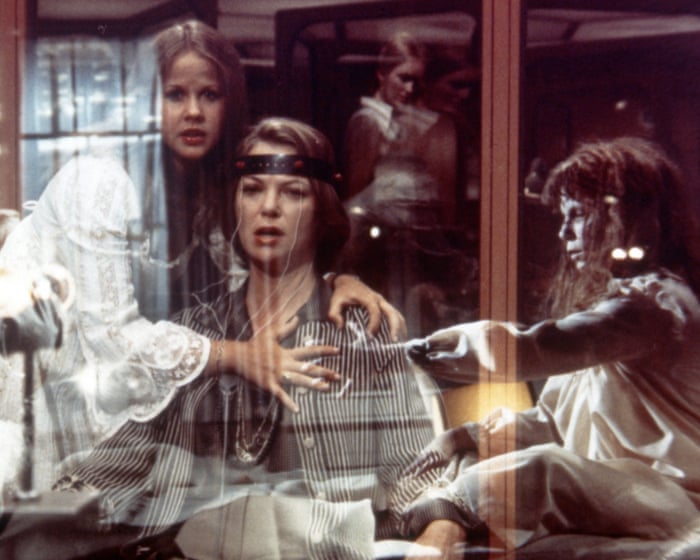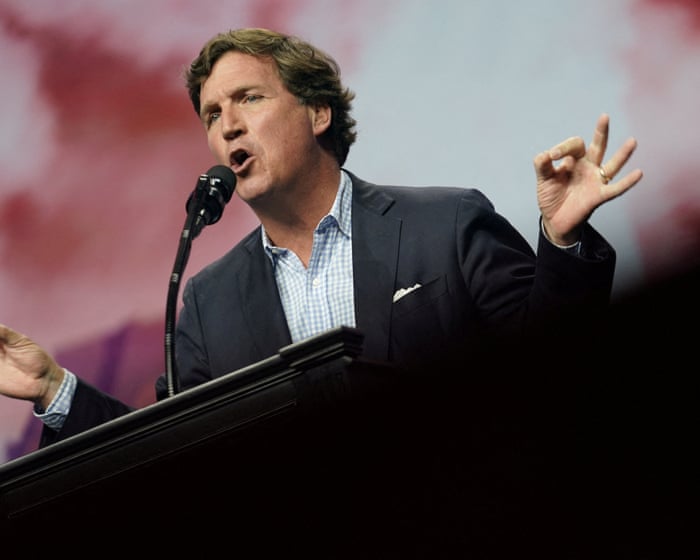“It doesn’t inspire terror, it inspires laughter.” “A movie for idiots, a completely cheesy rip-off that makes no sense at all.” “The stupidest big-budget movie ever made.” These were some of the more restrained reviews for Exorcist II: The Heretic, one of Hollywood’s most infamous flops, when it premiered in 1977. Its director, John Boorman, said he felt completely humiliated and nearly hopeless. “I considered my options. The first was to kill myself. The second was to defect to Russia,” the chastened director told one interviewer. He asked another if he could make up for the film by “burning myself alive on Hollywood Boulevard.”
So what went wrong? Audiences were probably expecting shock, horror, spinning heads, and vomit, but Boorman gave them metaphysics and surrealism instead—and they weren’t having it. That’s why many viewers jeered, laughed, threw popcorn at the screen, and even—according to William Friedkin, director of the original Exorcist, who called the sequel a “horrible picture”—chased studio executives down the street. People were baffled by a plot that turned Linda Blair’s Regan, the traumatized girl from the first film, into an all-American tap-dancing teenager. For some reason, she’s undergoing hypnotic therapy on a Bakelite “synchronizer” machine run by a blunt, no-nonsense psychiatrist played by Louise Fletcher (Nurse Ratched from One Flew Over the Cuckoo’s Nest).
The film broke box office records on its opening weekend because people were eager to see the follow-up to the original. But word of mouth was awful, and ticket sales quickly dropped. A devastated Boorman re-edited the movie just days after its release—much like Michael Cimino would later do with his equally doomed western, Heaven’s Gate.
The story of one of the “biggest disasters in movie history” is told in David Kittredge’s new documentary, Boorman and the Devil, which premieres this week at the Venice Film Festival. British critic Mark Kermode, a fan of the original Exorcist, may have called the sequel “clearly the worst film ever made by anyone ever,” but Kittredge’s entertaining and thoroughly researched documentary makes a strong argument that it’s time to take another look at Boorman’s misstep. This was the English director at the height of his creative powers. He deliberately set out to make a big-budget studio film in the style of Powell and Pressburger’s Black Narcissus (which famously recreated the Himalayas at Pinewood Studios). Boorman shot almost the entire movie, including the African scenes, on soundstages in Burbank, California. To its admirers, The Heretic is far richer, more humanistic, and less misogynistic than Friedkin’s original, which became one of the highest-grossing films of all time.
Kittredge says he first saw the film as a teenager on Betamax, in the re-edited European version. He “didn’t love it” at the time, but it stuck with him. “I thought it was really, really fascinating,” he tells me. This was a Hollywood blockbuster made as if it were “an experimental art house picture.” Boorman himself later admitted some regrets. He really wanted his friend Jon Voight, whom he worked with on Deliverance, to play Father Philip Lamont, the weathered protagonist confronting evil. Voight, who once considered becoming a priest, was initially interested but, as Boorman explains in the documentary, turned it down because “at that particular time, he was thinking about converting to Judaism, since his research into Christianity led him to believe it was a heresy of Judaism.” A young Christopher Walken was also considered for the role but had a scheduling conflict.A stomach bug caused another actor to miss his audition, which is how Richard Burton, fresh from his Broadway success in Equus, ended up landing the role.
The production of The Heretic was fraught with difficulties from the start, almost as if Pazuzu—the demon from the story—had cursed it in advance. Before filming even began, one of the lead actors, Lee J. Cobb, died of a heart attack. Cast and crew members fell ill; Linda Blair later recalled in a documentary how she nearly fell off a skyscraper, and director John Boorman became seriously sick with valley fever, bringing production to a halt.
Kittredge’s argument is a familiar one: the failure of The Heretic, along with other ambitious and unconventional films of the era—such as The Missouri Breaks, New York, New York, 1941, Sorcerer, and Heaven’s Gate—changed how Hollywood studios operated. Studio executives took note when George Lucas’s Star Wars, released just weeks before The Heretic, grossed over $775 million. This led to a swift backlash against auteur-driven filmmaking and a shift toward youth-oriented franchise blockbusters.
The Heretic served as a clear lesson in how not to make a sequel—and that was part of the problem. Boorman saw it not as a follow-up but as a “riposte” to William Friedkin’s original. He and several cast members signed on precisely because they disliked the first film, which they considered sadistic and exploitative. Film historian Joseph McBride, who was a journalist for Variety during the making of The Heretic, recalls, “Boorman told me he made the film to attack the first one. Max von Sydow [who played Father Merrin] felt the same way—that the original was exploitative and amounted to child abuse.”
After the disastrous premiere, producer Richard Lederer suggested Boorman speak with McBride “if you need a friend.” McBride spoke with Boorman several times as the director desperately tried to re-edit the film, cutting scenes that had made audiences laugh. McBride saw this as “a misguided mission… he was mutilating his own film, which I think is a really great film—serious, moving, and visually spectacular.”
Ironically, Warner Bros. protected the original U.S. release version from Boorman’s edits because it would have been too expensive to create new prints.
Efforts to reclaim once-maligned films as misunderstood masterpieces can sometimes come off as special pleading—or a cynical attempt to wring a little more money from a forgotten work. Still, Kittredge makes a strong case for including The Heretic in the canon. The film features astonishing Steadicam work by Garrett Brown (who later worked on Kubrick’s The Shining), a mesmerizing score by Ennio Morricone, stylized production design by Richard Macdonald, mind-bending locust-eye-view shots, a thrilling race back to Georgetown to confront evil, and above all, the sheer, daring ambition of Boorman’s storytelling.
Now 92, Boorman went on to rebuild his career with successes like Excalibur, The Emerald Forest, and Hope and Glory. Yet, as he admits to Kittredge, the “old wound” from The Heretic’s failure has never fully healed. He still believes that if the film had been released independently of The Exorcist, it would have been received much more warmly.
Was the movie truly cursed? Kittredge, who spent seven years making his own documentary on the subject, isn’t sure—but he admits that when a friend gave him a Pazuzu statue, he was too afraid to even take it out of the box. Now, however, he hopes any curse is lifting and that audiences will come to recognize that, at its heart,At the very least, this is one of the most unfairly overlooked and misunderstood films of the 1970s. Boorman’s “The Devil” will screen at the Venice Film Festival on September 5.
Frequently Asked Questions
Of course Here is a list of FAQs about the film Exorcist II The Heretic written in a natural conversational tone
Frequently Asked Questions
Q What is Exorcist II The Heretic
A Its the 1977 sequel to the hugely successful horror film The Exorcist Directed by John Boorman its widely considered one of the biggest critical and commercial failures in cinema history
Q Why is it considered such a bad movie
A Critics and audiences hated almost everything about it The plot was confusing and nonsensical the special effects were cheesy the dialogue was strange and it completely abandoned the terrifying grounded tone of the original film
Q Whats the movie actually about It sounds confusing
A The plot is famously hard to follow It involves Regan MacNeil years after her exorcism a priest investigating the death of Father Merrin a synchronizer machine that lets people share thoughts and a locust demon The story jumps around and never comes together coherently
Q Was it a box office failure
A Yes completely It cost about 14 million to make and only earned about 30 million worldwide After its disastrous opening weekend its earnings plummeted making it a major financial flop
Q Did the original cast return for the sequel
A Linda Blair and Ellen Burstyn returned though Burstyn has said she only did it for the money Max von Sydow appeared in flashbacks The most famous absence was Jason Miller who played Father Karras in the original
Q What are some specific examples of what makes it so bad
A Some infamous moments include
A climactic battle where the villain is defeated by a bunch of locusts flying into a electrical generator
The synchronizer machine which looks incredibly silly
Richard Burtons overthetop hammy acting
A bizarre outofplace subplot about telepathy and healing in Africa
Q Did the director John Boorman know it was going so badly




